
Exchanges with AI Product Recommendations BFCM: Boost Your Sales
Boost holiday sales with AI-driven recommendations this BFCM. Discover strategies to engage customers and increase conversions.
Shipping, Tracking & Notifications
Boost customer experience and reduce support tickets
Realtime order and shipment tracking
Proactive order and shipping notifications
AI-Enhanced Discounted Labels
Predictive pre-purchase estimated delivery dates
Self-Serivce branded order tracking
Effortless experience delivered
Identify and Resolve Order Issues
Realtime order and shipment tracking
Make returns profitable and delight customers
Flexibility to define any return destinations & conditions
Simplify returns for your customers and team
Incentivize exchanges over returns
Returns management made easy for your team
Returns management made easy for your team
Easy claims and smart upsells
Understand why your customers are returning
In-Store & Curbside Pickup
Unify the online and the in-store experience
Hassle-free pickup experience for customers
In-Store dashboard to keep operations streamlined
In-Store and Online orders unified
Drive foot-traffic to your stores
Shipping, Tracking & Notifications
Boost customer experience and reduce support tickets
Realtime order and shipment tracking
Proactive order and shipping notifications
AI-Enhanced Discounted Labels
Predictive pre-purchase estimated delivery dates
Self-Serivce branded order tracking
Effortless experience delivered
Identify and Resolve Order Issues
Realtime order and shipment tracking
Make returns profitable and delight customers
Flexibility to define any return destinations & conditions
Simplify returns for your customers and team
Incentivize exchanges over returns
Returns management made easy for your team
Returns management made easy for your team
Understand why your customers are returning
In-Store & Curbside Pickup
Unify the online and the in-store experience
Hassle-free pickup experience for customers
In-Store Dashboard to keep operations streamlined
In-Store and Online orders unified
Drive foot-traffic to your stores
Boost customer experience and reduce support tickets
Realtime order and shipment tracking
Proactive order and shipping notifications
AI-Enhanced Discounted Labels
Predictive pre-purchase estimated delivery dates
Self-Serivce branded order tracking
Effortless experience delivered
Make returns profitable and delight customers
Flexibility to define any return destinations & conditions
Simplify returns for your customers and team
Incentivize exchanges over returns
Returns management made easy for your team
Equip your team for precise return checks.
Easy claims and smart upsells
Understand why your customers are returning
Unify the online and the in-store experience
Hassle-free pickup experience for customers
In-Store Dashboard to keep operations streamlined
In-Store and Online orders unified
Drive foot-traffic to your stores
Find the answer to all your questions
Take a step by step trip through our functionality to see how we can improve your ecommerce processes.
Explore the most comon questions about WeSupply
Calculate the ROI that WeSupply can bring you
Request a no strings attached review of your current shopping experience and missed conversion opportunities
Read actionable articles on how to optimize your post-purchase experience and decrease support tickets
Get inspired by stories of how our customers implemented an effortless post-purchase experience
Wondering if WeSupply is a good fit for you? Read through our use cases to see how we can help you increase conversion & improve CX!
A Deep Dive into Top Companies' Order Tracking & Returns Strategy
Find the answer to all your questions
Explore the most comon questions about WeSupply
Calculate the ROI that WeSupply can bring you
Request a no strings attached review of your current shopping experience and missed conversion opportunities
Take a step by step trip through our functionality to see how we can improve your ecommerce processes.
Read actionable articles on how to optimize your post-purchase experience and decrease support tickets
Get inspired by stories of how our customers implemented an effortless post-purchase experience
A Deep Dive into Top Companies' Order Tracking & Returns Strategy
Wondering if WeSupply is a good fit for you? Read through our use cases to see how we can help you increase conversion & improve CX!
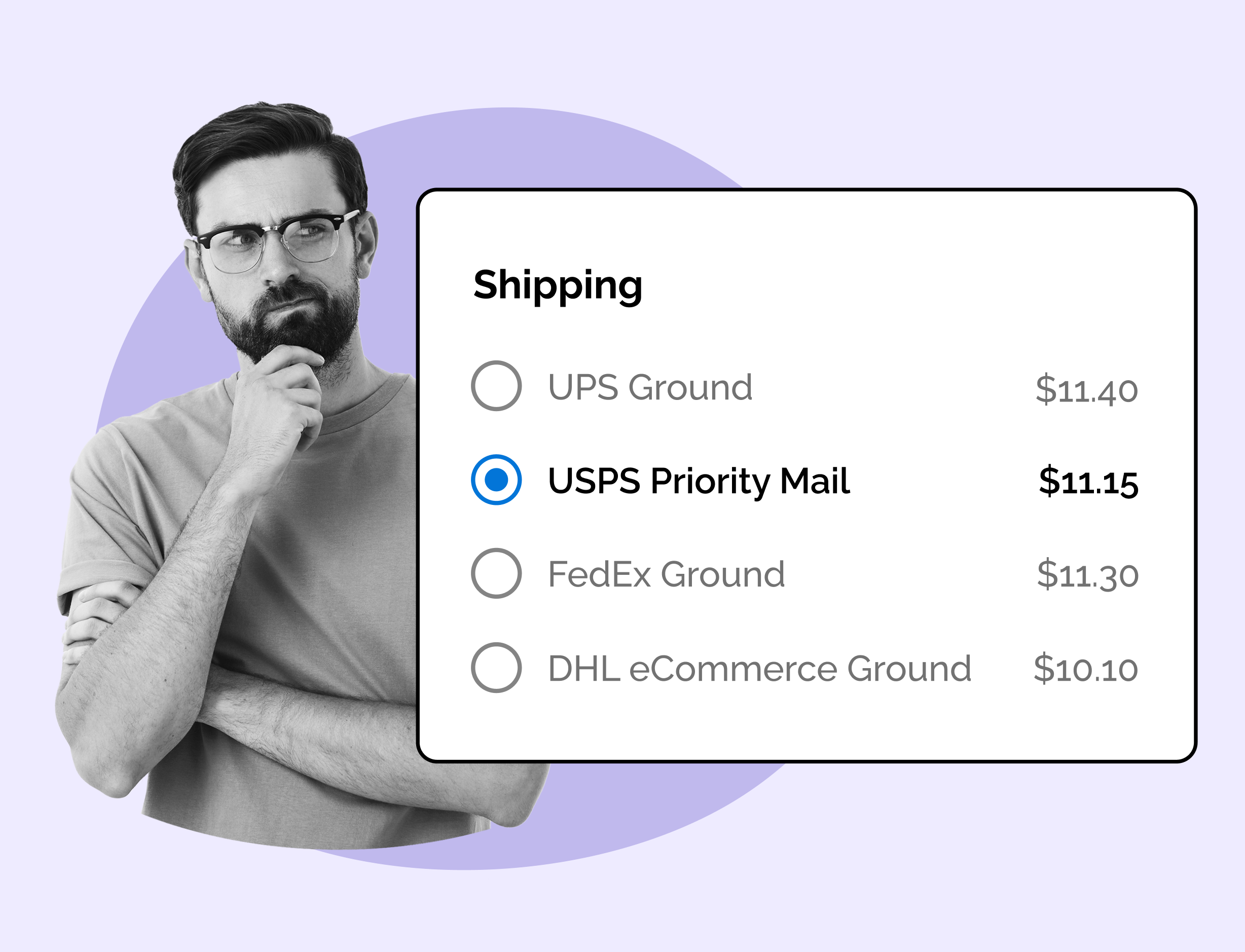
If you run a business that ships products, or even if you just mail things to friends and family, you know that shipping can quickly become expensive. In fact, according to the Pitney Bowes Parcel Shipping Index, more than 161 billion parcels were shipped worldwide in 2022, and costs keep climbing every year. Choosing the wrong shipping method flat-rate or standard can mean spending more than you need to.
Selecting the right shipping strategies is crucial, as the approach you choose can significantly impact your bottom line by optimizing costs and improving efficiency.
The challenge is that there isn’t a one-size-fits-all answer. Sometimes flat-rate is the winner, other times standard shipping saves more. The right choice depends on what you’re sending, how heavy it is, where it’s going, and how much predictability you want in your costs. Flat-rate shipping, for example, offers predictable shipping costs, making it easier to budget and plan compared to standard shipping. Let’s break it down so you can make the best decision every time.
Flat-rate shipping work is simple: you pay one set price as long as your package fits into a carrier’s flat rate packages, such as a box or envelope provided by major carriers like USPS, UPS, and FedEx. These flat rate shipping options offer fixed prices and consistent pricing, so it doesn’t matter how heavy the package is (as long as it stays within the maximum weight or weight limit often 70 pounds for most usps flat rate boxes and similar options from other carriers) or how far it’s traveling. For example, the USPS Medium Flat Rate Box in 2025 costs $17.10, whether you’re shipping it across town or across the country.
The main benefit is simplicity. You don’t need to measure the box or weigh the package, but box size and carrier rates do determine eligibility and cost for flat-rate shipping. You just grab a flat-rate box, fill it, and know exactly what the cost will be. Carriers like USPS, UPS, and FedEx provide these usps flat rate boxes for free, which also helps businesses cut down on packaging expenses.
Flat-rate shipping shines when you’re sending dense, heavy items that would normally be expensive to mail by weight. Customers also like it because they know the shipping cost upfront without surprises, benefiting from consistent shipping costs and flat rate shipping costs that provide predictability. Flat rate shipping time is also reliable and consistent, helping meet customer expectations. Flat rates simplify shipping for businesses seeking cost control.
Standard shipping, sometimes called weight-based or economy shipping, calculates the cost based on three main factors: the weight of the package, its size, and how far it’s going. Carrier rates and different shipping zones also play a significant role in determining the final price, as shipping charges can vary depending on the carrier’s pricing structure and the geographic region. A light, local shipment within one shipping zone might cost only a few dollars, while a heavier box traveling cross-country through multiple zones could cost much more.
This method can be cheaper for lightweight items. For instance, mailing a small 8-ounce package through USPS First-Class can cost around $3.50 to $4.50, which is far less than paying $8.50 for a flat-rate envelope. The tradeoff is that you have to measure and weigh every package, and delivery can sometimes take longer typically 3 to 7 business days for ground services.
For businesses with many different types of products, standard shipping offers flexibility because you can use your own boxes, custom packaging, or even branded materials. Courier companies provide a range of options for businesses, allowing them to choose the best shipping solutions for their needs.
The main difference is predictability versus variability. Flat-rate is always the same price for the same box, providing predictable shipping costs, which can be a key factor for businesses looking to manage expenses consistently. Standard shipping changes depending on the details of each package.
Weight also plays a big role. Flat-rate favors heavy, dense shipments that fit inside the provided boxes. Standard shipping is better for lighter, smaller packages where paying by weight ends up being cheaper.
Distance is another key factor. Flat-rate costs the same no matter how far the package travels. Standard shipping gets more expensive the further the package goes, especially across zones or internationally.
Speed can vary too. Many flat-rate services include priority delivery often 1 to 3 days. Standard shipping can be slower, though you can usually pay extra to speed it up.
Finally, packaging matters. Flat-rate requires you to use specific boxes or envelopes, while standard shipping lets you use your own packaging, giving more freedom for branding or unusual product sizes. Businesses should evaluate their shipping strategies based on the typical size, weight, and destination of their shipments to optimize costs and efficiency.
When it comes to managing shipping costs, understanding the differences between flat-rate shipping and standard shipping is essential for ecommerce businesses aiming to maximize profit margins. Flat-rate shipping offers a fixed price for packages that fit within specific flat rate box sizes and weight limits, regardless of the shipping zone. This predictable pricing structure means you always know the exact shipping cost upfront, making it easier to budget and avoid unexpected costs during the shipping process.
Flat-rate shipping simplifies the way you calculate shipping costs, as you don’t need to worry about the package weight (as long as it’s under the maximum) or the distance it’s traveling. This can be especially cost effective for heavier items that fit snugly into a flat rate box, since standard shipping costs often increase with both weight and distance. For example, shipping a dense, heavy product across multiple shipping zones can be much cheaper with a flat-rate option than with standard shipping, where costs can quickly add up.
On the other hand, standard shipping costs are calculated based on package weight, dimensions, and the shipping zone. This means that for lightweight or small items, standard shipping can often be the more economical choice. If your business frequently ships products that don’t come close to the weight limits of flat rate boxes, you may save money compared to paying the same price for every shipment. However, the variability in standard shipping costs can lead to unexpected expenses, especially during peak seasons or when shipping to distant regions.
Ultimately, the most cost effective shipping strategy depends on your typical package weight, box sizes, and shipping destinations. Ecommerce businesses should regularly compare flat rate shipping prices with standard shipping rates to ensure they’re choosing the best option for each order.
Delivery time is a crucial factor in the shipping process, especially for ecommerce businesses focused on customer satisfaction and repeat purchases. Flat-rate shipping services, such as USPS Priority Mail Flat Rate, are known for their reliable delivery times typically 1 to 3 business days regardless of the shipping zone. This consistency allows businesses to set clear customer expectations and build trust, as customers know exactly when to expect their packages.
Unlike flat rate shipping, standard shipping delivery times can vary widely depending on the shipping method, package weight, and how far the package needs to travel. Standard shipping might take anywhere from 3 to 7 business days for domestic shipments, and even longer for international shipments. This variability can be frustrating for customers, particularly if they are used to the faster, more predictable delivery times offered by flat rate shipping services like USPS Priority Mail.
For businesses, choosing between flat rate and standard shipping often comes down to balancing shipping costs with the need for reliable delivery times. If fast, predictable delivery is a priority such as during holiday seasons or for high-value orders using flat rate shipping can help ensure customer satisfaction. However, if delivery time is less critical and cost savings are the main goal, standard shipping may be a better fit, especially for less time-sensitive shipments.
Flat-rate shipping is popular for several reasons. The biggest advantage is cost predictability. You know exactly how much you’ll pay, which makes budgeting much easier and allows businesses to confidently offer free shipping as a promotion. There are no surprises like fuel surcharges or extra zone fees, which helps build customer confidence by providing transparency and reliability.
It can also save a lot of money on heavy items. For example, shipping a 10-pound box from New York to California with USPS Priority Mail (weight-based) could cost around $30–$40 in 2025. The same box shipped in a USPS Medium Flat Rate Box would cost only $17.10. That’s a savings of more than 50%.
Flat-rate also comes with free packaging supplied by the carrier. This reduces packaging costs and streamlines the packing process, making the overall fulfillment process more efficient. You don’t need to buy boxes or envelopes, and you can be sure they are approved for mailing. Many flat-rate options also include tracking and insurance at no extra charge.
Finally, customers often appreciate knowing the exact cost upfront. This builds trust, increases customer confidence, and reduces the chance of cart abandonment in e-commerce checkouts.
Flat-rate shipping isn’t perfect. The biggest drawback is that it’s often more expensive for light packages. Mailing a small box of jewelry that weighs only a few ounces will likely cost less with standard shipping than paying the flat-rate price.
There are also limits. Flat-rate boxes can hold up to 70 pounds, but you can’t go beyond that, and you’re restricted to the sizes provided by the carrier. If your product doesn’t fit well, you may end up with wasted space or the need for extra packaging.
Branding can also be limited. Since you must use the carrier’s packaging, you lose the opportunity to ship in custom-printed boxes that might enhance your brand image.
Know the Drawbacks of Flat-rate Shipping
Book a quick call with our experts to see how WeSupply helps you avoid overspending on light packages, packaging limits, and missed branding opportunities with smarter shipping options.
Combat inconvenience with proactivity & self service
Book a quick call with our experts to see how WeSupply can help you make returns easy for your customers with a beautiful, self-service solution that makes their experience easier while also providing new ways to lower costs and earn back revenue.
Standard shipping offers flexibility. You can choose your own packaging, which is useful if your business sells items of many different shapes and sizes. You can also design branded boxes or eco-friendly packaging that better represents your company. Additionally, businesses can select the most suitable postal service such as USPS, UPS, or FedEx based on their shipping needs, cost considerations, and delivery strategies.
For light and local shipments, standard shipping is often the cheapest option. Sending a small, 12-ounce package within the same city might only cost a few dollars, compared to much higher flat-rate costs.
Another advantage is that you pay for exactly what you ship. If your catalog includes a mix of small and large products, standard shipping ensures your customers aren’t paying a flat-rate price for something tiny. This is especially beneficial for online stores that require tailored shipping solutions to manage diverse inventory and optimize fulfillment.
The main challenge with standard shipping is unpredictability. Prices can change based on weight, size, distance, and even fuel costs. This makes it harder for businesses to forecast expenses or advertise flat shipping rates to customers.
It can also be more expensive for heavy or long-distance shipments. A 15-pound box going across the country could easily cost double or triple the flat-rate price.
Finally, calculating costs for each package can take more time and effort. Businesses may need to weigh, measure, and compare shipping calculators for every order.
Before choosing, businesses should run comparisons using carrier calculators. For e commerce businesses, these calculators are essential tools to determine the most efficient way to ship packages, helping them select the best shipping method for their needs. USPS, UPS, and FedEx all provide online tools where you can input weight, size, and destination to instantly see the costs for both flat-rate and standard shipping.
Packaging efficiency is another factor. Free flat-rate boxes can cut costs, but standard shipping lets you choose smaller, lighter packaging that might lower postage.
Delivery times matter too. Flat-rate services like USPS Priority Mail typically deliver in 1–3 days, which is faster than ground services like UPS Ground or USPS Ground Advantage, which can take 3–7 days.
Finally, watch for hidden fees. Standard shipping sometimes includes extra costs for fuel surcharges or residential delivery, while flat-rate prices usually include everything upfront.
Imagine shipping a 10-pound box from New York to Los Angeles. With standard USPS Priority Mail (weight-based), you might pay around $35. Using a Medium Flat Rate Box, you’d pay only $17.10. In this case, flat-rate is clearly the winner.
Now picture sending a small 8-ounce package within the same city. Flat-rate would cost $8.50 for the smallest envelope. Standard shipping through USPS First-Class would cost about $3.75. Here, standard shipping is the obvious choice.
For businesses with a mixed catalog of products some light, some heavy the best approach is often a combination of both methods. Heavy, long-distance orders can go flat-rate, while smaller, local shipments can go standard. This hybrid strategy ensures you’re always getting the most value.
When it comes to shipping, you’ve probably asked yourself: “Should I use flat-rate or standard shipping what really saves me more?” The truth is, the answer depends on the size, weight, and distance of each order. That’s where WeSupply steps in to make things easier, smarter, and more affordable.
Instead of guessing which option is best, WeSupply helps you compare and choose instantly. Here’s how:
Easy Rate Comparison: See real-time prices from over 100 carriers in one place, so you can compare flat-rate vs. standard shipping without juggling multiple platforms.
Discounted Rates: Save up to 83% on shipping costs with no contracts or volume requirements whether you pick flat-rate or standard.
Smart Flexibility: Switch carriers for each order based on cost or speed, ensuring you always get the best value.
Built-in Accuracy: Automatically pull in order details to create labels in just a few clicks no errors, no wasted time.
Customer-Friendly Tracking: Give shoppers clear delivery updates, branded tracking pages, and easy returns, reducing “Where is my order?” calls.
Risk Protection: Add shipping insurance to protect packages and your bottom line, whether shipping standard or flat-rate.
With WeSupply, you don’t have to stress about making the wrong choice. Instead, you’ll always know when flat-rate saves you money or when standard is the smarter option.
👉 Ready to cut costs, simplify shipping, and deliver a smoother customer experience? Book a demo with WeSupply today and see how easy it is to make shipping decisions that work for you and your customers.
So, which saves you more flat-rate or standard shipping? The truth is, it depends on the package. Flat-rate works best for heavy, long-distance orders, while standard shipping often wins for lighter, local deliveries.
The real advantage comes when you don’t have to guess. With WeSupply, you can instantly compare rates from 100+ carriers, unlock discounts up to 83%, generate labels in seconds, and protect every order with built-in insurance and tracking. Plus, branded notifications and easy returns keep your customers informed and happy. Instead of choosing one method, WeSupply helps you switch seamlessly between flat-rate and standard shipping, ensuring you always balance cost, speed, and satisfaction.
In the end, it’s not about one option or the other it’s about having the flexibility and insight to make the smartest choice every time.
1. What is the difference between flat-rate and standard shipping?
Flat-rate shipping charges one fixed price for approved boxes, regardless of weight or distance. Standard shipping costs vary based on weight, size, and distance. Flat-rate is better for heavy items, while standard often saves on lightweight or local shipments.
2. When should I choose flat-rate shipping?
Flat-rate shipping is best for heavy, dense items or long-distance deliveries. It offers predictable costs, free packaging, and faster delivery times, making it ideal for e-commerce businesses needing consistency and cost control.
3. When is standard shipping cheaper than flat-rate?
Standard shipping usually costs less for lightweight or local packages under one pound. It also allows custom or branded packaging, giving businesses flexibility when flat-rate boxes don’t fit product size or brand needs.
4. How does WeSupply help me choose between flat-rate and standard shipping?
WeSupply instantly compares real-time rates from 100+ carriers, helping you decide when flat-rate or standard shipping saves more. You get accurate cost visibility without manual calculations.
5. Does WeSupply offer discounted shipping rates?
Yes. WeSupply provides access to discounted rates up to 83% off with no volume requirements. This ensures businesses save money whether using flat-rate or standard shipping.
6. What other benefits does WeSupply offer besides cost savings?
WeSupply offers branded tracking pages, automated label creation, customer-friendly returns, and built-in insurance options helping businesses reduce support calls, protect shipments, and deliver a smoother customer experience.
7. Does WeSupply have an Official Shopify App?
Yes. WeSupply has an Official Shopify App. You can download it and start integrating with your Shopify Store.
8. Does WeSupply have an official Magento extension?
Yes, WeSupply has an official extension for Magento. The WeSupply x Magento integration allows for automating order tracking experiences, reducing customer inquiries, automating shipping email and SMS notifications, and providing a fully branded order tracking experience
9. Does WeSupply have an official BigCommerce App?
Yes, WeSupply has an official BigCommerce App. You can integrate WeSupply with your BigCommerce store to improve your post-purchase customer experience.
Learn How To Create Successful Post Purchase Email Campaigns
Build an effective post-purchase email flow that helps you increase customer satisfaction and drive revenue growth!

Boost holiday sales with AI-driven recommendations this BFCM. Discover strategies to engage customers and increase conversions.

Discover essential strategies to streamline bulk returns handling and enhance efficiency. Read the article for practical tips!
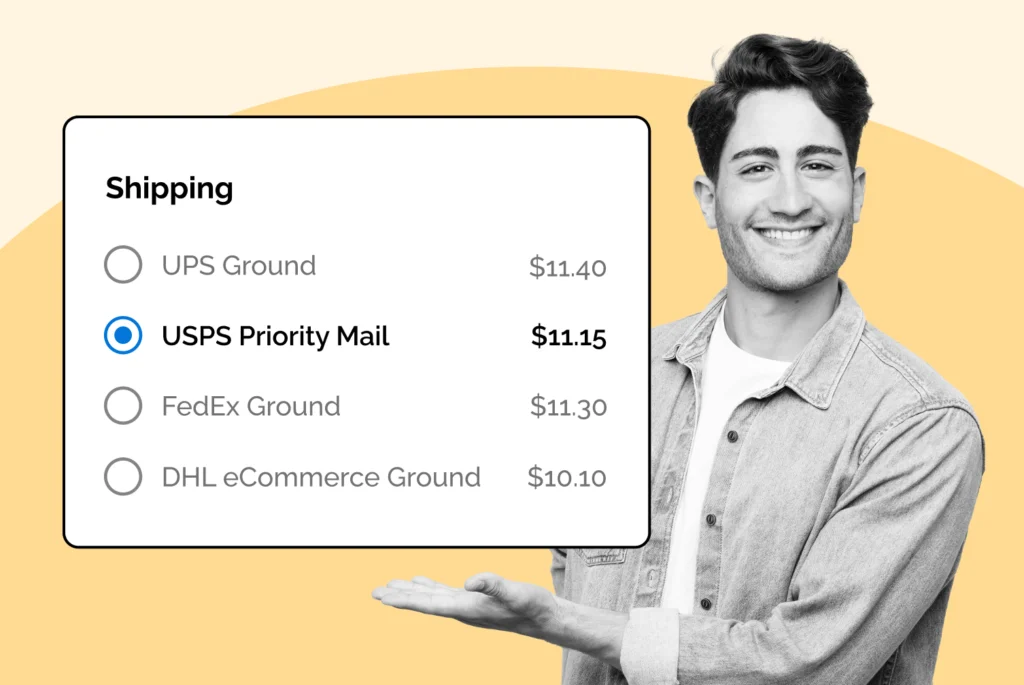
Learn how to accurately calculate shipping costs with our essential guide. Get practical tips and tools to ensure your estimates are spot on.

Discover effective strategies to turn BFCM returns into profitable opportunities. Boost your revenue this season.
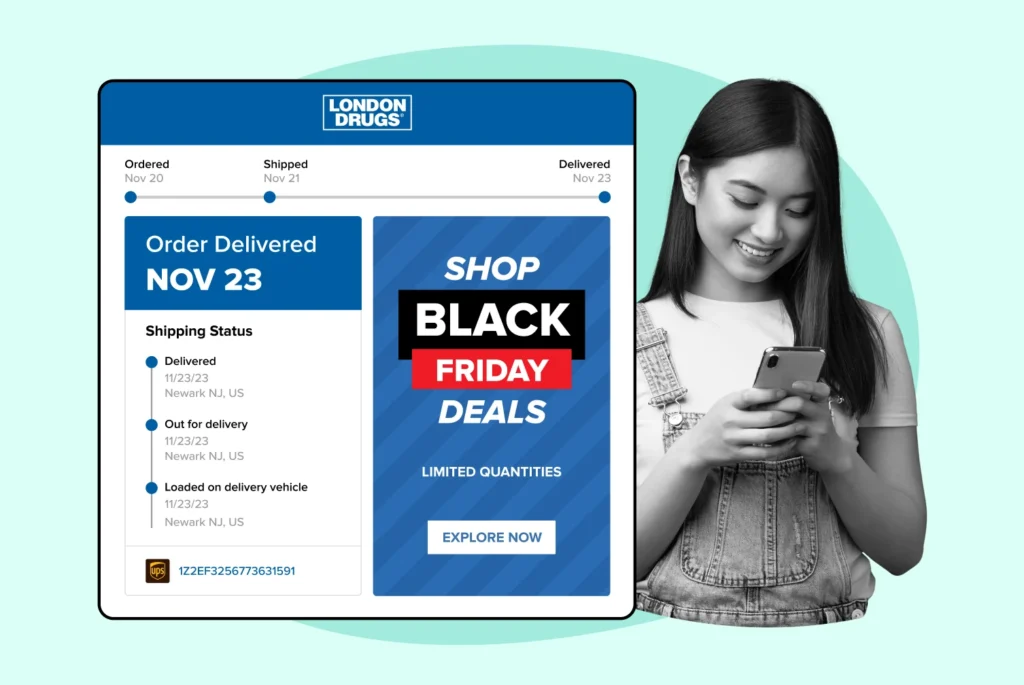
Discover effective BFCM shipping strategies to enhance your sales this holiday season. Maximize efficiency and delight your customers.
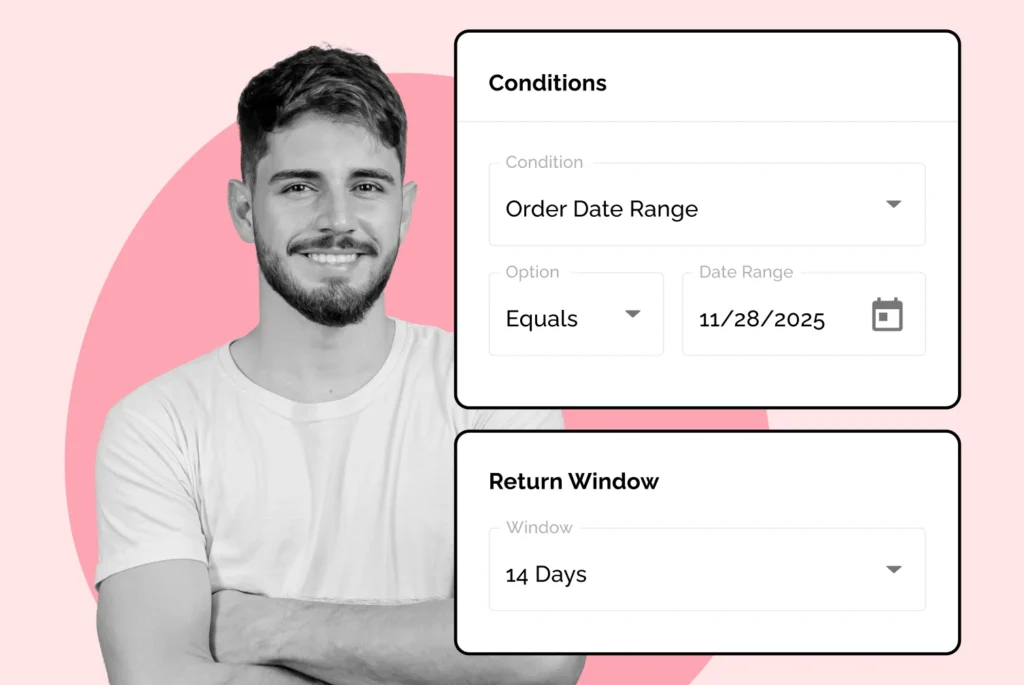
Discover essential strategies to streamline bulk returns handling and enhance efficiency. Read the article for practical tips!
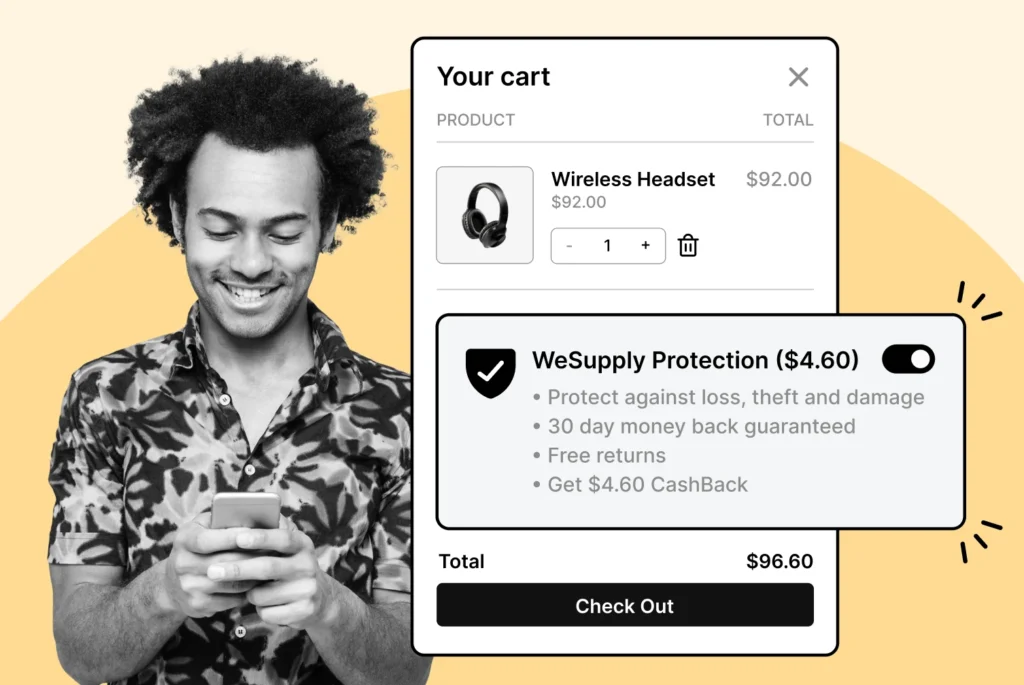
Master post-holiday returns management with effective strategies that streamline processes and enhance customer satisfaction.

Master the art of managing BFCM returns and exchanges with effective strategies that boost eCommerce success.

Discover effective BFCM shipping strategies to enhance your sales this holiday season. Maximize efficiency and delight your customers.